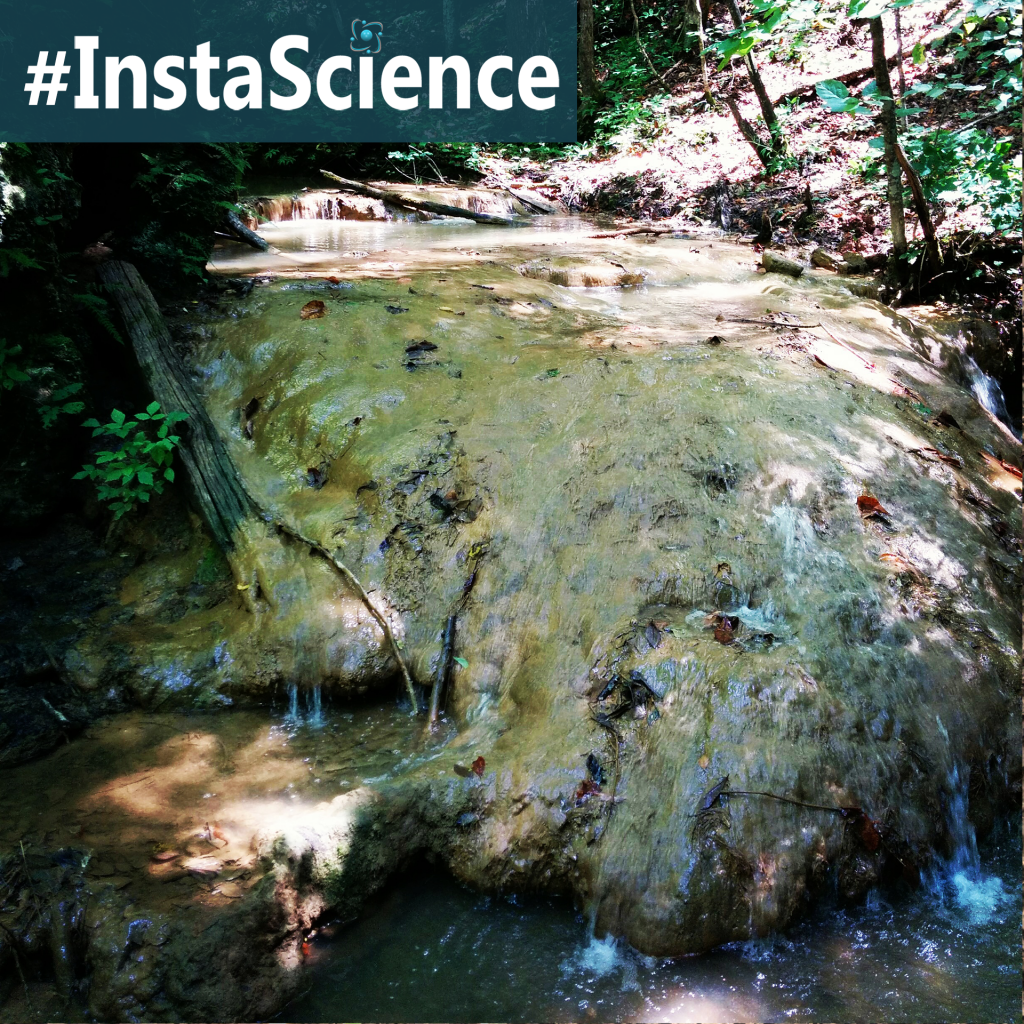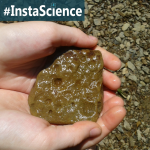
We went for a hike on a trail that boasted some of the largest travertine deposits in the area. I was super excited to see these deposits in person, but when we got there – my excitement temporarily fell. It looked like a bunch of mud piled up everywhere – not so pretty – until we got up close and could really see the beauty in this sedimentary rock.
Travertine is a type of limestone. It typically forms around the waterfalls found in mineral-rich, hot-spring streams. The heat of the water erodes the rock as it makes its way to the surface and the water becomes enriched with minerals. As the water travels down the stream, it cools, and the minerals are deposited along the way.
Travertine is typically brown or tan, hence the mud-like appearance from a distance. However, it can have veins of darker colors and even some pinks depending upon how it is formed. This softer stone is rather porous. It is possible to have naturally occurring holes or even fossils trapped throughout a Travertine deposit.
Fun Fact – The Romans mined travertine for building temples, monuments, bath complexes, and amphitheaters such as the Colosseum.
Related Science Activity
- Make a sedimentary rock sandwich – Have your students make a peanut butter and jelly sandwich. Cut the sandwich into quarters and stack them on top of each other. Then, wrap the stack in plastic wrap and use a plate to smash the sandwich until it is half the size. Unwrap the sandwich and observe the changes.
Links to Research
- http://carvedstonecreations.com/blog/5-facts-about-travertine.html
- http://www.sciencekids.co.nz/sciencefacts/chemistry/calciumcarbonates.html
- http://www.comparerocks.com/en/limestone-and-travertine-types-and-facts/comparison-5-22-9
- http://geology.com/usgs/limestone/
- http://www.atlasofwonders.com/2012/11/travertine-terraces.html





Join the Community!